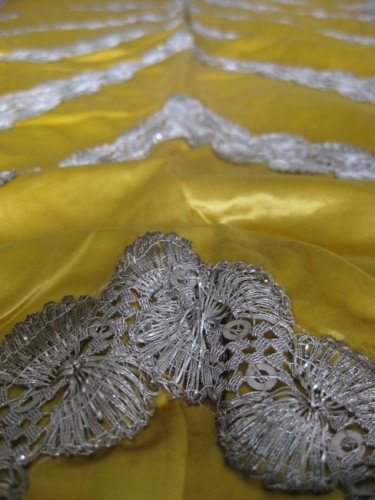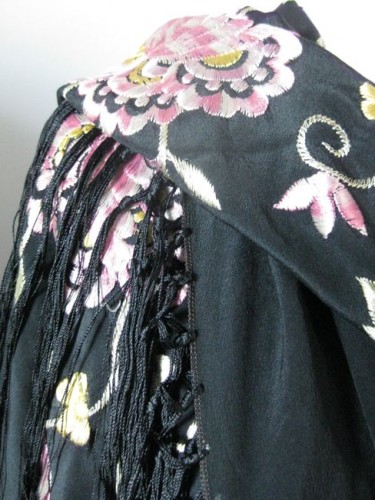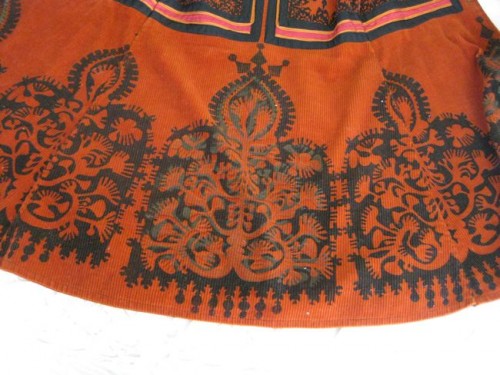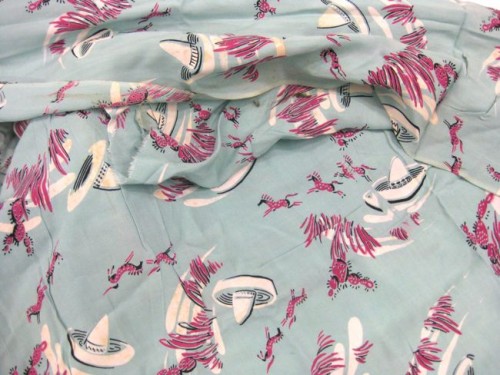There has been a bit of a debate on the sewing-focused internet world lately regarding what those who sew and create should call themselves. Are we sewers (but it sounds like a waste disposal network!)? Are we seamstresses (so confining, old fashioned, and gendered)? Are we sewists (but it’s a made up word – gasp, shock, horror!)?
I’m actually OK with all of them. I tend to use seamstress because, well, I’m an old-fashioned girl.
Really though, they are all slight misnomers, because the things that make the biggest difference in the final result of your project often aren’t the seams themselves: they are fabric choice, cutting, and pressing.
Pressing is so, so important – I’ll talk more about it later (the most accomplished draper/dressmaker/seamstress/costumier/pattern cutter, whatever you want to call her that I have ever worked with used to say “Never trust a seamstress who doesn’t use her iron more than her sewing machine”), but today I want to talk about fabric choice.
Fabric choice can make or break a project. A really, really, really good seamstress can make a bad fabric work, but it isn’t easy. It’s much more effective to just pick the right fabric for your project from the start.
So how do you know which fabric to pick? Patterns generally give guidelines, and a good independent fabric store will have staff that will know their fabrics, and can help you pick a suitable fabric.
Ideally though, you want to learn the fabrics for yourself.
Learn the different fibres that fabrics are made from: natural fibres like wool, linen, silk, and cotton, the processed naturals like rayon (or is that viscose?), and the synthetics like polyester, acrylic, and nylon.
Learn the weaves, the basics of tabby, twill, satin, and the rarer weaves like leno. Learn the knit weaves that allow for stretch.
Learn how to tell weaves by sight, and what a fabric is by feel, and (if that fails) how to do burn tests.
And most of all, learn what fabrics are good for what kind of sewing!
All of this takes a lot of reading, a lot of looking at fabric, a lot of sewing, and a lot of asking questions. But it’s worth it – because no matter how much you know about fabrics, there is always more to know, and the better you know your fabric, the better your sewing will look.
I feel so strongly about this, and I love fabric so much, that the class that I’m most excited about at Made Marion is Fabric Identification.
It’s not a sewing class, but it’s going to be tons of fun, and everyone who takes it will be a better sewer/seamstress/sewist after. We’re going to look at lots of fabric and feel lots of fabric and talk about fabric and play fabric identification games and learn so much. Students are going to get to play with some of my stash (I’ve shown some examples in the photos), and their own stash. I can’t wait! I hope some of you are joining me!







What a great idea! This knowledge is so valuable. It is heartbreaking to find you have done all the good sewing, and find the garment doesn’t work because the fabric was wrong. We all have these sad garments hiding in our memories or recycling stashes. My saddest was a beautiful tailored pair of trousers I made. The fabric was a beautiful, quite heavy, raw silk, in those lovely natural cream and honey colours with slightly uneven weave. The trousers were a triumph – they looked brilliant. Then I sat down, and the fabric pulled at the waist and leg seams! Dead trousers. I used the rest of the fabric to make gathered panels to fill a bamboo screen, and it is fine. It wanted to be curtains, but I didn’t listen to it. Of course, it was speaking Chinese. Sigh.
Ohhhh yes, I am guilty of coming back from the fabric shop and realising that I will struggle to sew the material, and it’s not right for the pattern.
One thing I am good at is pre-washing and pre-tumbledrying all my fabrics, on hot washes/hot cycles if the material will stand it. And then ironing the fabric. It’s frightening to see how much they shrink, I remeasure afterwards and I had one cotton shrink so much I may not have enough to make the dress I want after all :-/
I tend to stick to cotton and poly-cotton. So far every time I’ve sewn in something else its been a disaster. Mainly as a lot of the fabric I can’t recognize (and know the properties are and they aren’t really labeled in the shop and fabric seems to have different names in different places)…and I have a terrible habit of picking out cheap or pretty fabric rather than the correct fabric.
I play a game in the fabric store. I feel the fabric and guess if it is natural or synthetic. I’m getting so I’m guessing correctly more often than not but I’m still getting thrown by blends. That being said, if I guess a blend is a natural fiber, I will find the lable will say it is mostly the natural fiber and partically the synthetic.
I quite like the term “sempstress”, or I guess, in non-gender format, “sempster” – but I guess that’s way too archaic… Has a nice feel to it though.
Actually, the ‘-ster’ ending on names and occupations is feminine. Brewster, Baxter, Webster – were the women who brewed and baked and wove. (As distinct from Brewer, Baker and Weaver.) Spinster is the one that didn’t become a surname because every woman who was likely to score a surname did it, and therefore it was not a distinguishing activity.
I don’t think I really mind which word we use. I have always said, ‘I sew.’ Or ‘I make most of my own clothes.’ I never thought I was good enough to call myself a dressmaker. My mother set high standards.
Fascinating. I did not know that about ‘ster’. I love Webster for a weaver!
Learned something new! Thank you. 🙂
I love it too, sounds like hipster, very cool cats!
So true! Fabric is, to me, the most vital bit of a project. It could be partially that much of what I do is meant to be more toward the reproduction side, and the wrong fabric will kill the project. But I also think it’s the most fun–it’s the hunt, the artistic vision, and the bargain shopper all rolled into one 🙂 And I love how the exact same piece of clothing can look completely different done in different fabrics–I have a halter dress that I made in silk for a cocktail dress, and want to make in a fun cotton for a kick-around dress, and my two 18th century gowns are made from pretty much the same pattern, but the difference between the linen and silk is everything!
And you’re right, rayon is a processed natural. Is it just me, or is it really hard to find? Maybe it’s just where I live…sigh.
I love to sew with natural fabric, love the hand, the drape, and the look. Love your vintage fabrics!
This is the class I needed when I first started sewing! Where I lived at the time, it was only thrift stores and fabric warehouses with no labels to speak of. Now, I’m much better at identifying fabrics and am slightly better at choosing the right one for a project. I’m still iffy about how to treat the fabrics, though, prior to sewing. I need to take a trip to NZ just to take your classes (and climb Mt. Doom)!
I missed out on a similar class in Brno – I agree, knowing your fabrics is so very important!
BTW, have you read Oonaballoona’s post on the subject of the name for us who sew? Her husband came up with the name “Sewasaurus Rex”, which is catching up quickly. 🙂
I have read the post, and seen the term, and it’s very very cute, but I won’t be calling myself that anytime soon. Just a little too cute for me!
I’m working late, and I am a Seamstress 🙂 It took me a long time to say it without irony, but I’ve always said it with pride. I’m 32 years old, and have been a professional seamstress for 14 years. Sure, it’s an old fashioned term, but then again it’s an old fashioned skill, and I like it that way! Why reinvent the (belt) wheel?